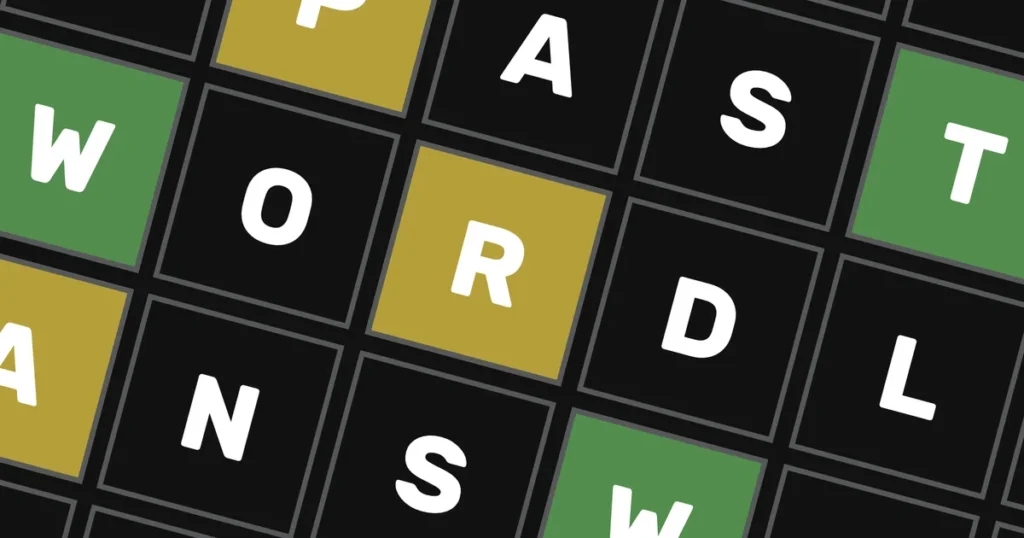Introduction to Wordle
Amidst a world of mobile games and quick apps, Wordle came as a breath of fresh air in the form of a simple word game that took millions of minds by storm. Minimalistic in appearance but full of mental stimulation, it asks players to solve a five-letter word within six attempts or fewer. But Wordle is not only a game—it’s a cultural phenomenon in playing casual games differently.
Let’s find out how Wordle is played, why it’s addictive, and how you can hone your skills to become an expert at Wordle.
The Origin of Wordle: From Hobby to Viral Sensation
Wordle was invented by Josh Wardle, a software developer who first made it for his partner. The game was a gift, a product of love and imagination. But its popularity spread quickly. Wordle became public in October 2021, and within a couple of months, it was hit by millions every day.
What made it unique? Simplicity. No advertisements. No flashy visuals. Just a single puzzle per day and a simple user interface.
The New York Times purchased Wordle in January 2022. Although some worried that changes would be made, the essence of the experience was left intact, retaining the magic that made it popular.
How to Play Wordle: The Basics Explained
Wordle provides a daily puzzle in which players need to guess a hidden five-letter word. With each guess, clues are revealed:
- Green indicates the letter is in the correct spot and is spelled correctly.
- Yellow indicates that the letter is in the word but not in the proper position.
- Gray indicates that the letter is not in the word at all.
You have six opportunities to guess the word. Easy enough? It is. But there’s a profound challenge beneath the ease.
Why Wordle Became So Popular
A number of factors were involved in Wordle’s dizzying ascent:
Social sharing: Users can share their outcome with colored boxes without the answer being shown.
Daily limit: With one puzzle a day, it keeps users returning and stops burnout.
Community: Users love comparing outcomes with friends and sharing strategies.
Brain exercise: It exercises vocabulary, reasoning, and pattern spotting.
Overall, Wordle is fun and rewarding.
The Psychology Behind Wordle’s Addictiveness
Wordle leverages fundamental psychological principles. Scarcity (just one puzzle per day) makes it more valuable. The instant feedback following each attempt keeps the brain stimulated. And the thrill of completing a puzzle creates a feeling of accomplishment.
Players also appreciate the social confirmation of sharing outcomes. The green, yellow, and gray block grid functions as a trophy—visible evidence of overcoming a mental challenge.
Wordle Strategies for Improved Outcomes
To master Wordle, it’s not just about luck. Strategy plays a huge role. Here are expert tips:
1. Choose a Strong First Word
Start with a word that includes common vowels and consonants. Some examples:
- SLATE
- CRANE
- AUDIO
- TRACE
These contain frequently used letters and increase your chances of quick clues.
2. Use the Clues Wisely
If a letter goes green, lock it in place in your next attempt. If it’s yellow, put it in another spot. Don’t repeat gray letters—they’re not part of the solution.
3. Don’t Repeat Letters Early
Don’t guess words with two letters early. Use guesses to find new information rather than repeating letters unless certain.
4. Think in Word Families
Once you have learned some letters, think of words that match the pattern. For example, if you know the word ends with “ATE,” use “PLATE,” “SLATE,” “CRATE,” etc.
5. Vocabulary Practice
Vocabulary building makes a difference. The more five-letter words you learn, the more accurate your guesses will be.
Advanced Techniques: More than Just Basic Guessing
More advanced players apply even more sophisticated tactics:
1. Letter Frequency Analysis
English has certain letters that appear more often. E, A, R, I, O, T, and N are high-frequency letters. Starting with words that use these increases your odds.
2. Elimination Method
Use early guesses to eliminate as many letters as possible, even if the word doesn’t seem likely. For example, using “BREAD” can help test B, R, E, A, and D all at once.
3. Positional Awareness
Following the receipt of clues, rearrange letters in your mind and imagine the potential combinations. Visualizing where the letters must go diminishes the options.
Wordle Daily Routine: Mental Strength Building
Consistency is the key to mastery of Wordle. Here’s a good daily routine:
Set a time: Morning, evening, or break time—routine it.
Use a notebook: Write down guesses, outcomes, and patterns.
Stay undistracted: Concentrate fully when playing. It sharpens the mind.
Join groups: Reddit, Discord, or Twitter communities share a daily puzzle discussion.
Wordle Variants and Spin-offs
Wordle’s popularity fueled numerous spin-offs, such as:
Quordle – Crack four Wordles simultaneously.
Octordle – Eight simultaneously.
Heardle – Guess the song from a clip of its introduction.
Worldle – Guess the country by its shape.
These variants increase complexity and diversity, ensuring the thrill remains intact.
Wordle and Language Learning
Wordle is now being utilized by teachers as a language learning tool. It aids in:
- Enhancing spelling
- Vocabulary development
- Refining deduction skills
For non-native English speakers, it becomes a game and an everyday English lesson. Even teachers make personalized Wordles from lesson plans.
The Social Media Influence of Wordle
Wordle’s layout makes sharing easy. The result is a colored grid for each, demonstrating progress without revealing the answer. It promotes competition and discussion on media such as:
- Instagram Stories
The style is familiar and has developed its own language among enthusiasts.
Why Wordle’s Simplicity Wins
Most games push ads, in-app purchases, or complex features. Wordle doesn’t. That’s part of its brilliance. There are:
- No distractions
- No accounts
- No money involved
This purity makes Wordle accessible to everyone—from children to seniors.
Wordle’s Place in Pop Culture
Wordle has influenced pop culture in surprising ways. You’ll find:
- Wordle memes
- Late-night talk show mentions
- Wordle-themed gifts and merchandise
Even celebrities post their Wordle results. It’s no longer just a game—it’s part of modern digital life.
Educational Use in Schools
Wordle is incorporated into lesson plans by some teachers to:
- Begin the day with a challenge
- Create vocabulary lists
- Develop logical thinking
Subject-specific Wordles can be tailored for learning science, mathematics, or history.
The Future of Wordle
The New York Times has not altered the game much, but options are:
- Multiplayer modes
- Time-based challenges
Language-based Wordles
However, the charm of the original format lies in its simplicity, and hence wide-ranging changes are unlikely.
Common Wordle Mistakes to Avoid
Here are common mistakes and how to steer clear of them:
Reusing gray letters: Squanders guesses.
Overlooking vowel positions: Vowels lead the puzzle.
Blind guessing: Wild attempts lead to defeat.
Looking only at green letters: Yellow letters count too.
Steering clear of these mistakes enhances accuracy and enjoyment.
Last Thoughts: Why You Should Play Wordle
Wordle is not just a game. It stimulates the brain, establishes vocabulary, and offers a universal experience despite age and culture. In a few minutes every day, players enhance concentration, logic, and language.
Solving it alone or playing with friends, Wordle offers a fulfilling intellectual challenge. It combines logic with entertainment, presenting a welcome respite from screens packed with cacophony.
So the next time you fire up your browser in the morning, take a few minutes with Wordle. It could be the best five-letter dawn of the day.



